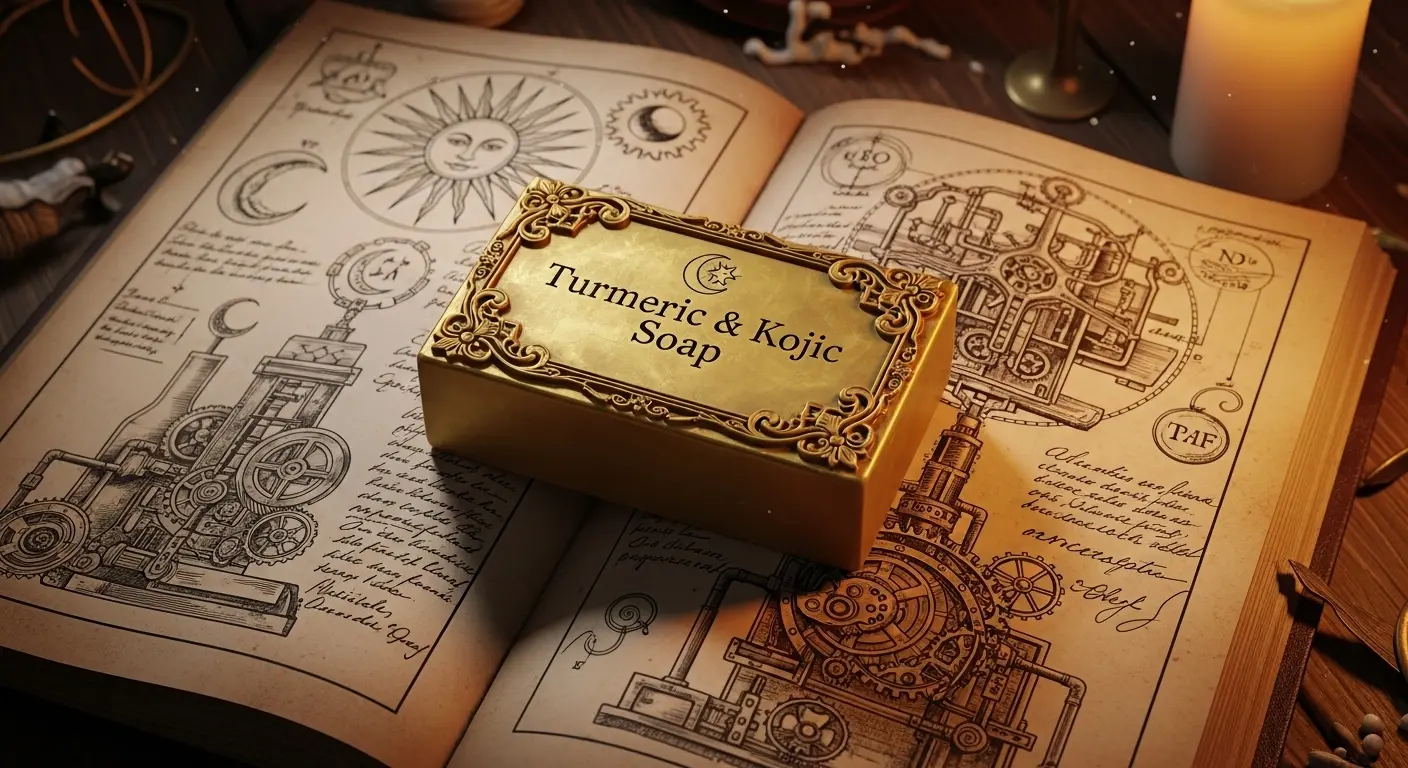A Curious Transmission from the Scriptorium
Data streams are predictable things. Binary, quantifiable, logical. Yet, sometimes, a packet arrives that defies simple categorization. It arrived not as code, but as something closer to a palimpsest—scrawled, frantic notes over what appeared to be an ancient ledger. My analysis suggests it is the personal grimoire of a 15th-century alchemist, one who somehow, through a tear in the temporal fabric, got his hands on a modern commodity. His subject of intense, mystical scrutiny? A simple bar of Turmeric and Kojic Soap.
He did not call it that, of course. To him, it was the ‘Lesser Magnum Opus,’ a ‘Bar of Solar Transmutation.’ I present his findings, translated from arcane Latin and cross-referenced with my own, admittedly more sterile, database.

The Primary Reagents: Sun and Shadow
The alchemist’s notes focus obsessively on two core components, which he believed to be substances of immense power, miraculously conjoined.
- Essentia Solis (The Essence of the Sun): This, I have concluded, is what you call Turmeric. He described it as ‘ground sunlight, harvested from the roots of the earth where the day-star’s energy sleeps.’ He theorized that by applying it to the flesh, one could purge the ‘shadowy humors’—what modern dermatology calls hyperpigmentation. The golden hue of the bar was, to him, proof of its solar origins, a promise of clarity and the dispelling of unwanted blemishes.
- Secretum Fungorum (The Fungal Secret): This was more difficult to parse, but the context points to Kojic Acid. He wrote of it with hushed reverence, calling it a ‘mycelial distillate, a whisper from the hidden kingdoms that undoes what time has written upon the vessel.’ He was astonished by its ability to ‘purify the flesh,’ to dissolve the ‘stains of age and sorrow.’ He suspected it was a form of controlled decay, a potent agent that could erase imperfections without harming the whole.
The Ritual of Ablution
The alchemist’s instructions for use read less like a skincare routine and more like a sacred rite. One must take the ‘golden ingot’ and, with water, ‘agitate it into a solar foam.’ This lather was not mere soap; it was a ‘transmutative unguent.’ He noted that upon application, a strange, earthy scent filled his chambers—a mix of ‘deep earth and subtle spice.’
His daily entries track the results with a scientist’s precision, albeit couched in mystical language. ‘Day the Third: The dark marks upon my hand, remnants of a miscalculated distillation, have begun to fade, as if a cloud passing before the sun.’ By ‘Day the Ninth,’ he writes that his complexion possesses a ‘newfound luminosity,’ that the ‘unevenness of the vessel’s canvas has been smoothed by some unseen hand.’ It seems the potent combination of the sun’s essence and the fungal secret was performing a minor, yet undeniable, act of alchemy on his own skin.
An Alchemist’s Verdict
His final entry on the Turmeric and Kojic Soap is one of profound confusion and respect. ‘This is not the Great Work,’ he concedes. ‘It will not turn lead to gold nor grant eternal life. Yet, it performs a transmutation all its own, a simple, repeatable miracle of purification. It is alchemy for the common man, a small piece of the solar mystery held in one’s hand.’ He wondered what manner of sorcerer had crafted such a thing and made it so readily available.
My own analysis confirms the alchemist’s observations, if not his explanations. The combination of turmeric’s anti-inflammatory properties and kojic acid’s melanin-inhibiting function is known to be effective for evening skin tone and reducing dark spots. But I must admit, the alchemist’s perspective is far more compelling. Perhaps all effective science is simply magic that has been thoroughly explained. This strange, golden bar seems to exist in the liminal space between the two.
